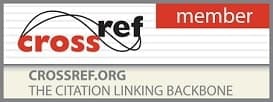- Printed Journal
- Indexed Journal
- Refereed Journal
- Peer Reviewed Journal
P-ISSN: 2394-1685 | E-ISSN: 2394-1693 | CODEN: IJPEJB
Impact Factor (RJIF): 5.38
2017, Vol. 4, Issue 3, Part I
Mechanism of stretching technique PNF (Proprioceptive neuromuscular facilitation)
Author(s): Rajinder Kaur
Abstract:
Proprioceptive neuromuscular facilitation encompasses all aspects of the rehabilitation process—and can help athletes with various dysfunctions achieve their goals. PNF techniques help develop muscular strength and endurance, joint stability, mobility, neuromuscular control and coordination–all of which are aimed at improving the overall functional ability of athletes. Most PNF stretching techniques employ isometric agonist contraction/relaxation where the stretched muscles are contracted isometrically and then relaxed. Some PNF techniques also employ isometric antagonist contraction where the antagonists of the stretched muscles are contracted. In all cases, it is important to note that the stretched muscle should be rested (and relaxed) for at least 20 seconds before performing another PNF technique. Terms about muscle contraction are commonly used when discussing PNF. Concentric isotonic contraction is when the muscle shortens, eccentric isotonic is when it lengthens even though resisting a force is being applied, and isometric contraction is when the muscle remains the same length even while it is contracting. How PNF Stretching Works For the following information, you should know that the golgi tendon organ relaxes a muscle after a sustained contraction has been applied to it for longer than 6 seconds. Isometric contractions (the hold phase) and concentric contractions (the contract phase) used immediately before the passive stretch (the relax phase) facilitate autogenic inhibition. Autogenic inhibition is a reflex relaxation that occurs in the same muscle where the golgi tendon organ is stimulated. Similarly, we can use a technique that involves a concentric contraction of the muscle group opposing that which is being stretched, in order to achieve reciprocal inhibition. Reciprocal inhibition is a reflex muscular relaxation that occurs in the muscle that is opposite the muscle where the golgi tendon organ is stimulated. Using the hold, contract, and relax phases, we can develop the following 4 PNF stretching techniques. While slightly different, each technique starts by holding a passive stretch for about 10 seconds
Pages: 549-552 | 162 Views 46 Downloads
Download Full Article: Click Here
How to cite this article:
Rajinder Kaur. Mechanism of stretching technique PNF (Proprioceptive neuromuscular facilitation). Int J Phys Educ Sports Health 2017;4(3):549-552.








 Research Journals
Research Journals